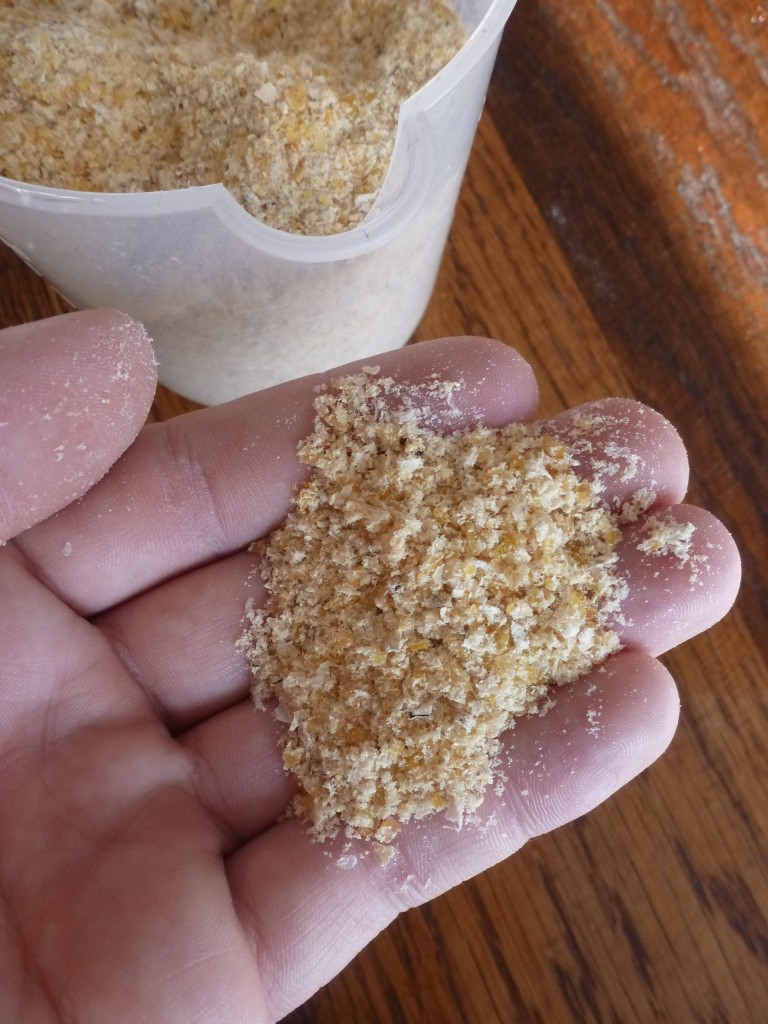 My bid for Bartlett’s: “Culinary invention has two mothers: scarcity and excess.”
My bid for Bartlett’s: “Culinary invention has two mothers: scarcity and excess.”
I think everybody understands how scarcity can encourage adventurous eating. We often say that the first man to eat a lobster, or an oyster, was a brave one, indeed. But it’s when you find yourself with an overwhelming surfeit of food that you can start doing really interesting things. The first person to press grapes to make wine must have had a lot of grapes, more than he could have eaten before they started rotting. And the first person to distill wine to make brandy must have had an awful lot of awful wine.
I wrote earlier in the fall of our bountiful corn harvest, and of a few of the ways we prepared the fresh corn: grilled, creamed, and made into chowder. We actually had so much corn that we were able to dry some. Lisa set the cobs on a rack in a low oven. The kernels turned brownish, shrunk into their sockets, and started to look a bit like rows of teeth set in the jaws of an old man.
 Once the cobs were dried through, the kernels popped off easily. We ran them through a grain mill, and damned if we didn’t have the most flavourful cornmeal that’s ever been in our kitchen. Between my nostalgia for eastern Ontario (where my dad grew up on cornbread, which they called “Johnnycakes”) and my background as a line-cook (where I made polenta almost every week) I admit to going through more than my share of bland, industrially-processed cornmeal, so it’s a thrill to have this stuff around.
Once the cobs were dried through, the kernels popped off easily. We ran them through a grain mill, and damned if we didn’t have the most flavourful cornmeal that’s ever been in our kitchen. Between my nostalgia for eastern Ontario (where my dad grew up on cornbread, which they called “Johnnycakes”) and my background as a line-cook (where I made polenta almost every week) I admit to going through more than my share of bland, industrially-processed cornmeal, so it’s a thrill to have this stuff around.
I once got in a polite argument with a chef I was working for. He had polenta on his menu, and the recipe he had provided the prep cooks was from the Zuni Café Cookbook, a restaurant in San Francisco renowned for impeccable, fresh ingredients expertly but simply prepared. The recipe had three ingredients: cornmeal, water, and butter. I suppose there was salt, too. Zuni Café no doubt was using the best corn grown in California, dried and freshly ground. We were using Purity brand cornmeal from a large distributor. Purity cornmeal tastes only vaguely of corn, and has the crunchy, siliceous texture of sand. It should only be used as a starchy conveyance for the warm, earthy flavours of stock, onions, garlic, melting cheese, butter, herbs, black pepper, and maybe a splash of vinegar.
Having now worked with our freshly milled cornmeal, I completely understand the Zuni recommendation for a light hand. The flavour is amazing, sweet, and unmistakably corny. It has an interesting texture, too: a little bit of the crunch you expect from cornmeal, but the grind has made it lighter, and flakier. While Purity cornmeal needs an army of ingredients to make it flavourful, good cornmeal can definitely stand on its own.
This really was one of the most exciting things to happen in my kitchen this fall. Stay tuned for a discussion on cornbread…
